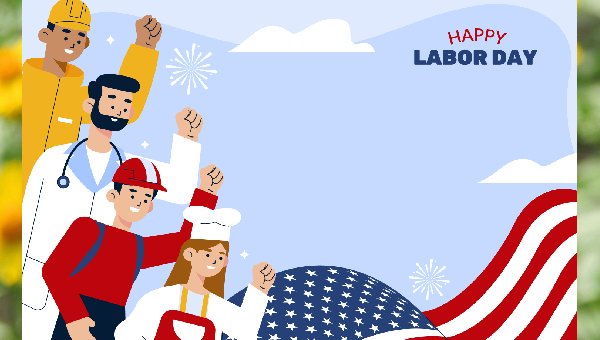Labor Day History: How America’s Workers Shaped the Holiday

Something that reminds us about the powerful history of America is what marks Labor Day falling every first Monday of September. It captures the quintessence of American labor development as a sign of honor for workers’ accomplishments and penances all through America’s history. Initially, this national occasion came into presence after a few battles and strikes; in any case, nowadays, it stands as a vital update of those who have made impacts within the lives of others conjointly speaks to a continuous battle for workers’ rights or perhaps way better said as that which is happening these days as well.
Origins of the Labor Movement
The labor development follows its beginnings to the development of American labor unions in the 1800s. During that period, industrialization was quick and led to noteworthy changes in work. For instance, factories, railroads and mines emerged but not every American participated equally in economic expansion. These were long hours, little pay and unsafe working conditions for employees necessitating calls for revisions.
One notable occurrence took place on May 4th, 1886 when a bomb was thrown into police forces during a general strike by labor unions advocating for an eight-hour day. The demonstration which had begun peacefully turned violent after a bomb was thrown at policemen leading to several deaths and numerous arrests. Specifically, the Haymarket incident showed that American workers were suffering intolerable conditions and required immediate government intervention through organized labor movements to improve their lives.
A National Holiday Movement
The idea of a national holiday for workers began in response to labor unrest and the need to commemorate their contributions. The ideas for Labor Day were propelled by major actors in the labor movement, as there were two founders of the American Federation of Labor (AFL), Peter J. McGuire and Matthew Maguire. They aimed to have a day that marked workers’ accomplishments and fostered unity within the labor movement.
What they wanted was, however, to have Labor Day serve as a day off work and celebration for employees which would be positive compared to strikes that usually ended up in violence. It should be seen as an alternative way of acknowledging American workers’ economic and social contributions apart from violent trade disputes.
Labor Day Becomes a Federal Holiday
Though Labor Day became increasingly popular, it took over ten years for the federal government to acknowledge it officially. In 1894, things dramatically changed during a period of major labor unrest that was marked by the Pullman Strike. Across the country, railroad boycotts were conducted beneath this strike and finished in rough showdowns between strikers and government troops.
In response to violence that erupted from the unrest and also to make up for the labor movement, President Grover Cleveland intervened in the Pullman Strike. In an attempt at restoring lawfulness and indicating his backing for workers, Cleveland signed a bill making Labor Day a national day off work. The 28th of June, 1894 saw the official recognition of Labor Day and its first federal celebration took place on September 3, 1894.
The First Labor Day
The Central Work Union (CLU) organized this occasion which was marked by a parade where thousands upon thousands of laborers marched through the streets. The parade had more significance than just being a sign of unity; it was also an indication that the labor movement had made some strides. Subsequently, a picnic which denoted some relief from their hardworking lives was enjoyed by families and workers after such parades.
Labor Day grew to be observed in different cities and states following the success of this inaugural celebration. Its increasing popularity revealed that people were becoming more aware of what workers did as well as the necessity for labor reforms.
Evolution and Importance
Lately, Labor Day has turned from being an occasion for labor protests and festivities into a broad celebration of the workforce. Currently, it is associated with unofficially marking the end of summer and is characterized by picnics, barbeques, etc. While these customs give people time off to relax their minds, they also remind them about labor’s holiday.
The importance of Labor Day goes further than just commemorations. It provides an opportunity to assess advancements in workers’ rights and tackle ongoing labor issues. This holiday acknowledges the gains made by trade unions but recognizes that there may be more work needed to have all workers treated fairly.
Contemporary Labor Problems
In these present times, Labor Day is a platform where current labor issues are addressed. Since the advent of this day, work has changed considerably in terms of gig and freelance work, technological advancement as well as fluctuating economic conditions. This however leads to new challenges for employees like job security, fair wages and benefits.
There are still unions and labor organizations that play an important role in representing workers’ rights. Recent labor activism concerns itself with things such as raising minimum wage levels, workplace safety and the right to associate at work freely. The revival of labor protests over the past few years is indicative of the continuing relevance of worker’s issues and the need to carry on advocating for them.
Significance of Labor Day these Days
Labor Day now is marked not only as a recognition of labor struggles and an enlightenment on what is left to be done. Doing so, allows us to grasp the weight of workers’ struggle and acknowledge workers’ efforts, as well as reflect on how far we have come while still having in mind how much more needs to be done for us to achieve our goals. In simple terms, it means celebrating milestones in our journey and reflecting on present disparities.
Employment day has continued to play a major role among employees and labor activists. It could be a time when we gather together to celebrate what has been achieved through joint effort and rejuvenate our commitment towards fair treatment of all workers. Every Labor Day must remember its historical significance because in the process of this struggle today we fight for progress that will bring about improved labor practices and rights for employees.
Conclusion
This is because Labor Day illuminates the struggles and accomplishments of Americans at work. This history is only a part of a bigger tale concerning the labor movement and its aims to obtain equitable working conditions. Therefore, going through labor protests and parades till it transformed into a federal holiday, Labor Day illustrates the cooperative spirit and acknowledges contributions made by workers.
For us to celebrate Labor Day, we have to remember its roots and advance the causes of workers’ rights. In addition, this holiday marks progress made so far as well as reminds people to address remaining issues where there are equal chances for every worker.
MUST READ: BBQ, Beaches, and Beyond Your Ultimate Labor Day Guide








